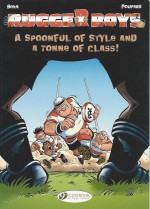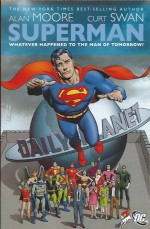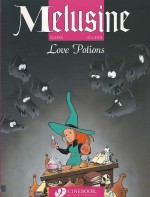
By Derib & Job translated by Erica Jeffrey (Cinebook)
ISBN: 978-1-84918-010-8
Children’s magazine Le Crapaud à lunettes was founded in 1964 by Swiss journalist André Jobin who then wrote for it under the pseudonym Job. Three years later he hired fellow French-Swiss artist Claude de Ribaupierre who chose the working name “Deribâ€. He had begun his own career as an assistant at Studio Peyo (home of Les Schtroumpfs), working on Smurfs strips for venerable weekly Spirou. Together they created the splendid Adventures of the Owl Pythagore before striking pure comics gold a couple of years later with their next collaboration.
Premiering in 1969, Yakari detailed the life of a little Sioux boy on the Great Plains; sometime between the Conquistadors’ introduction of horses and the coming of modern White Men.
Stuffed with bucolic whimsy, the beguiling series celebrates the generally simple and joyous existence of noble nomads in tune with nature and free from strife. The daily toil is occasionally punctuated with the odd crisis but these are usually resolved without fame or fanfare – usually by a little lad who is smart, compassionate and valiant.
He can also converse with all animals…
Derib – equally excellent in both enticing, comically dynamic “Marcinelle†cartoon style yarns and with devastatingly compelling meta-realistic action illustrated action epics – went on to become one of the Continent’s most prolific and revered creators. It’s incomprehensible to me that such groundbreaking strips as Celui-qui-est-né-deux-fois, Jo (the first comic on AIDS ever published), Pour toi, Sandra and La Grande Saga Indienne) haven’t been translated into English yet.
Many of his stunning works over the fruitful decades featured his beloved Western themes, built on magnificent geographical backdrops and epic landscapes, with Yakari considered by fans and critics alike as the feature which primed the gun.
Released in 1983, Les Prisonniers de I’Ile was the ninth European album (and, in 2008, Cinebook’s seventh British Yakari release): as always, a splendidly stand-alone mini-epic devoid of convoluted continuity. These heart-warming adventures work perfectly read in isolation: easily accessible for young kids and/or their adult minders meeting the bold little Brave for the first time…
The suspenseful saga begins with the boy marvel, his wonder horse Little Thunder and their friend Rainbow joyously playing on a beautiful promontory cutting into a lake. When a sudden storm erupts they take refuge in a cave and are stuck there for two terrifying days.
When the lightning and rain finally subside they emerge to find the spit of land is now and island. They – and many other animals – are trapped…
As the resourceful humans gather wood to make a signal fire they discover two elk with a big problem. Their calf is stuck under a fallen tree, but the Indians and their pony horse soon devise a way to free little Birch Shoot. Then the real problems start…
After the boy and girl splint the yearling’s broken leg and construct a branch bivouac to shelter him, searchers from the tribe come looking for them in a canoe. Yakari and Rainbow opt to hide, however, determined to stay and nurse the calf back to health…
That night Yakari’s totem Great Eagle visits for a chat and warns that the boy’s instincts were good, but further conversation is curtailed when worried father Proud Antlers realises that a hungry wolverine is on the island with them. He has past experience of how the wily hunters pick off the weak or wounded members of a herd…
Yakari has never heard of or seen such a creature and the elk’s tales are truly terrifying. Nevertheless, the little Brave appoints himself the family’s bodyguard, following them everywhere
His eager vigilance almost leads to catastrophe when he accidentally crowns old beaver pal Double-Tooth after the mighty swimmer ambles onto the islet in search of rare woods to carve. Soon however with his carpentry aid they have built a stout stockade around Birch-Shoot’s shelter.
Sadly, they have all severely underestimated the predator’s cunning and the wolverine simply proceeds to build devilish traps of his own. All he needs is the right moment to strike and feast…
Gripping with just the right amount of tension, this is a compelling yarn with a deliciously apt yet unforced denouement, one that will keep everybody sweet yet still delivers a satisfying kick for happy ending addicts…
This is one of Yakari’s most rewarding exploits, showing his warm benevolence, staunch determination and total commitment to his friends of variable leg-counts; a broad, bold romp no kid of any age could resist…
The evergreen exploits of the valiant little voyager who speaks with animals and enjoys a unique place in an exotic environment is an unmissable celebration of marvellously moving and enticingly entertaining adventure, honouring and eulogising an iconic culture with grace, wit, wonder and especially warmth. These gentle sagas are true landmarks of comics literature and Yakari is a strip no fan of graphic entertainment should ignore.
Original edition © LE LOMBARD (Dargaud- Lombard s.a.) 1983, by Derib + Job. English translation 2009 © Cinebook Ltd.










